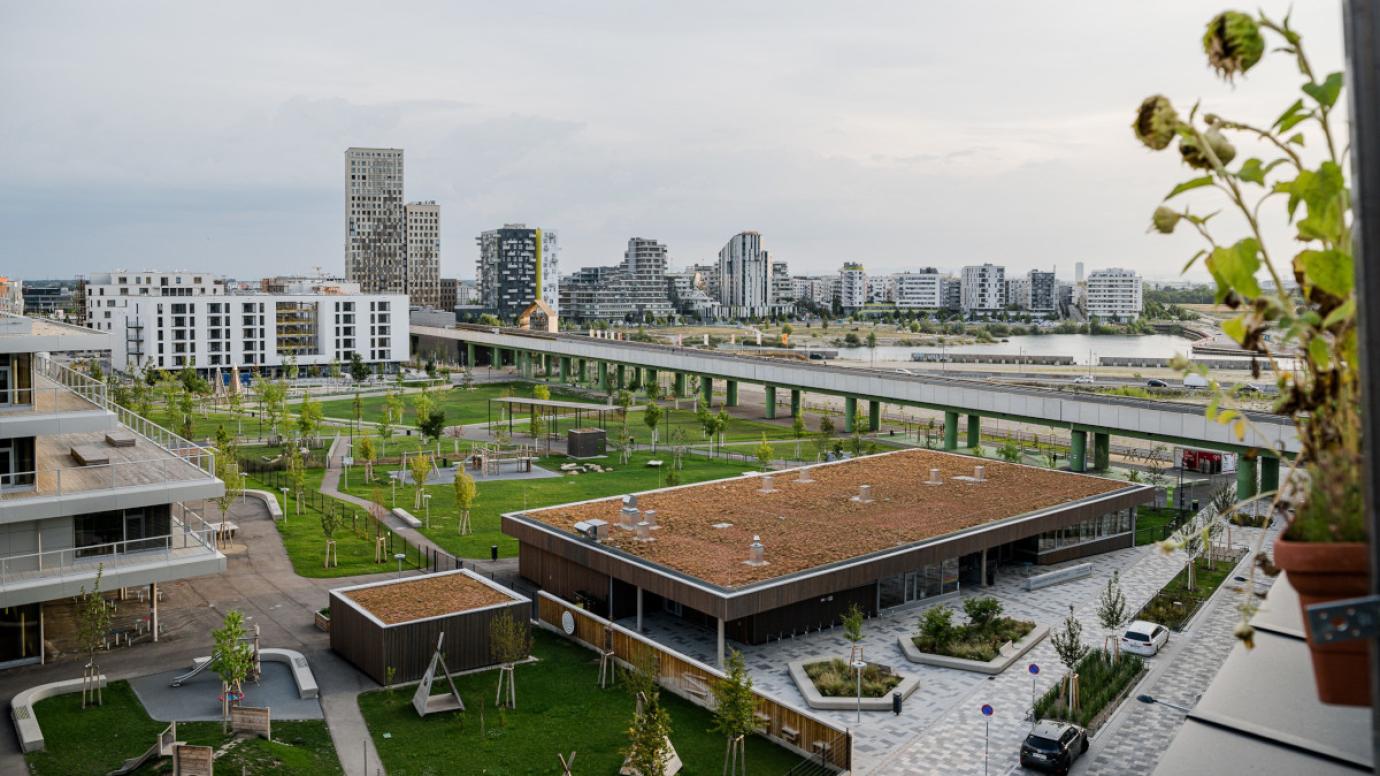Vienna: urban planning for and with women
Comprehensive neighbourhood-development in Aspern Lake City.
- Country:
-
 Austria
Austria
- Type of project :
- Governance
- Size of city/region:
- Above 1 million inhabitants

Key facts
Architecture studios:
- Tovatt Architects & Planners (masterplan)
- “Score of public space” by Gehl Architects ApS many planning studios for architecture, parks and public space
Main sponsor: Wien 3420 Aspern Development AG (City of Vienna, Federal Real Estate Agency, Vienna Insurance Group, Erste Bank)
Year completed: Started in 2003 - Ongoing
Total area: 240 ha
City / regional background
Vienna is considered a pioneering city in gender planning for its more than 25 years of practice. The Women's Office initiated planning-centred efforts in 1991, leading to a dedicated coordination office in 1998. Gender mainstreaming became a city-wide strategy in 2000, expanding into spatial development. From 2005 to 2010, Vienna executed about 60 pilot projects across planning levels. This approach, guided by a gender planning expert, involved interdisciplinary collaboration across administrative levels.
The project of Lake City Aspern consists of the re-development of a former airfield site that aimed to provide around 10,500 flats accommodating more than 20 000 people and creating 20 000 jobs. Centred on an artificial lake spanning 240 hectares, it ranks among Europe's largest development zones.
The challenge was to develop a sustainable and equally shared new part of the city over a long period of time.
Solution
Lake City Aspern exemplifies inclusive, gender-conscious urban development in a peripheral area.
Developments of Lake City Aspern focused on gender related aspects and on women’s needs - for instance higher sensitiveness on safety in public spaces, and their larger share of care work - while maintaining a user-centric approach and strong focus on community building.
Women's requirements were accounted for in the design of the area and of individual buildings. This encompassed park designs, sidewalk width and accessibility, seating availability in public spaces, well-lit streets, and a polycentric structure with facilities within a 15-minute walk.
The mixed-use centre integrates living (with social, private and co-housing projects), work, culture, and social infrastructure.
Most mainstream planning activities in Aspern are highly gender relevant, such as the first organised shopping street in Austria, which facilitates care work.
Addressing affordable housing with a gender lens, the project creates a safe and accessible urban environment where women can freely move around at any hour of the day. Spaces that induce anxiety, such as underground parking lots were carefully designed to improve the feeling of safety.
Criteria for high-quality (context, sense of place, diversity, beauty)
- In 2003, the city established a project team including landowners and surrounding neighbours. They had the opportunity to express their needs and ideas and were given a seat on the jury of the Europe-wide competition for the design principles of Lake City Aspern’s public spaces.
- An emphasis was placed on the design of public spaces, with various forms of parks, squares and semi open spaces available throughout the area.
- The project aims to promote sustainable modes of urban mobility and reduce car dependence. There are dense pedestrian routes, cycling lanes and public transport stops (bus and underground) in proximity.
- Streets and public areas are exclusively named after women - e.g. Simone-de-Beauvoir-Platz and Janis-Joplin-Promenade - as a subtle response to the historically prevalent practice of predominantly naming them after males.
- Residents express high identification with the community. Many report they feel like urban pioneers and say that living there feels like being on holidays, especially in summer when walking from their apartments to the lake in swimsuits.
Planning and management
The development agency (Wien 3420 Aspern Development AG) is responsible for the general development of the project. Development and planning take place in close cooperation with the city administration, as public spaces built by the development agency are then handed over to the city for maintenance. A specific unit for urban development areas in the Executive Office of Construction and Technology coordinates the different city departments involved.
Wien 3420 AG consists of about 20 staff members. The neighbourhood-management team has 6 members on the site. In addition, many city administration employees cooperate on various topics (urban planning, streets, parks, building permits, schools, kindergartens…).
Budget and financing
The total budget of the project was EUR 5 billion and it is mainly financed by revenue from land development and supported by municipal and national funds.
Transferable ideas
Vienna's success lies in disseminating gender mainstreaming across planning scales and tasks. This approach integrated various gender criteria, particularly influential in urban design, housing, park design, transportation and mobility. Successful implementation, seen in public parks, showcases the public sector's control as landowner, facilitating diverse user needs. A similar pattern applies to street design and public spaces, although its impact lessens in local services due to market dynamics.
Tips from the city:
- Find strong and reliable partners that are willing to go for an extended walk with you.
- stay open for exchange with others and be careful what to accept and what to reject, keep flexible and awake, as whatever you have achieved might not be the right solution for the next time.
- put on your gender glasses, as if not, you stay on one eye blind.
Contact information
Contact the Vienna Urban Development and Urban Planning Department via email.


